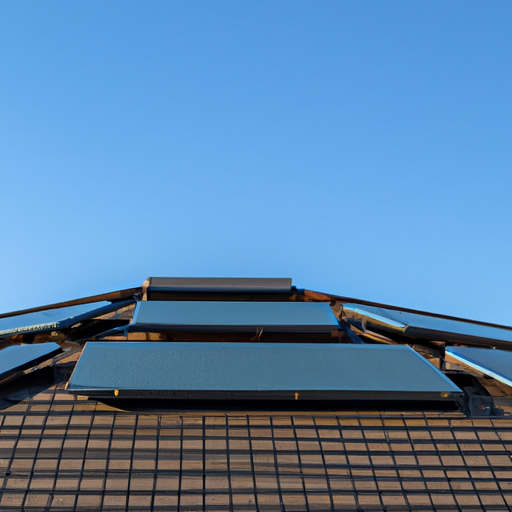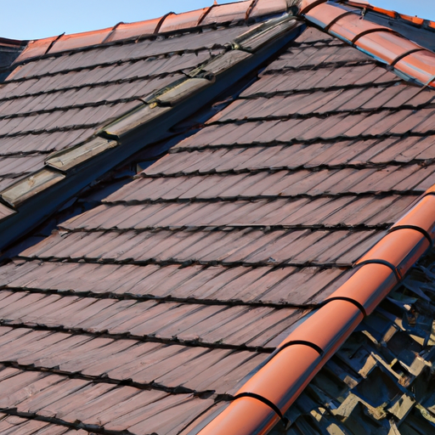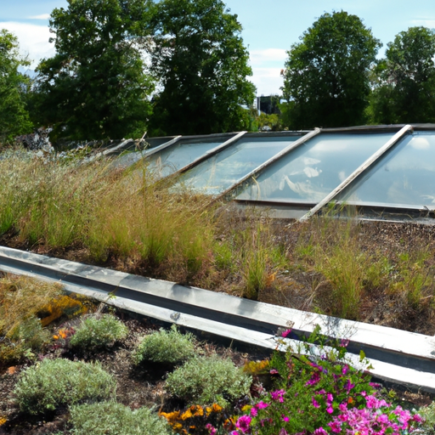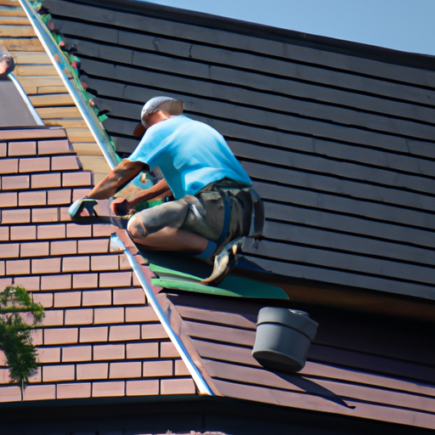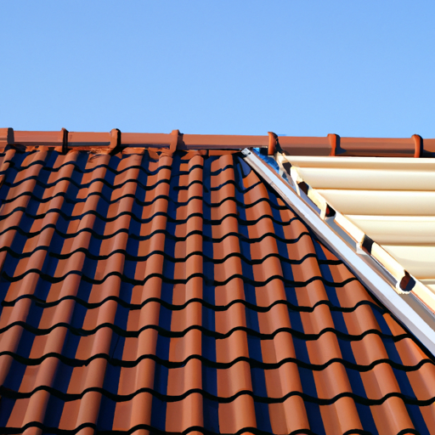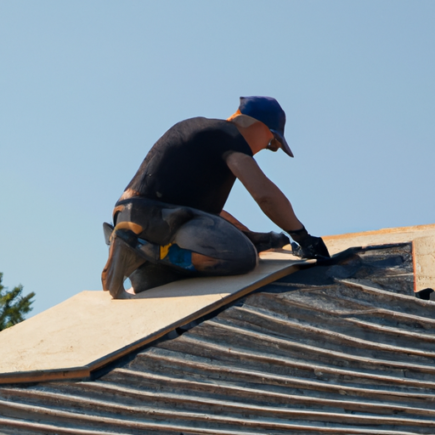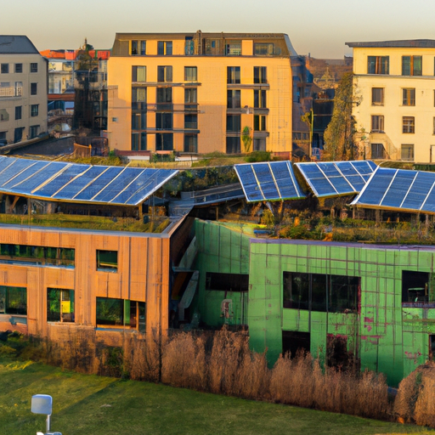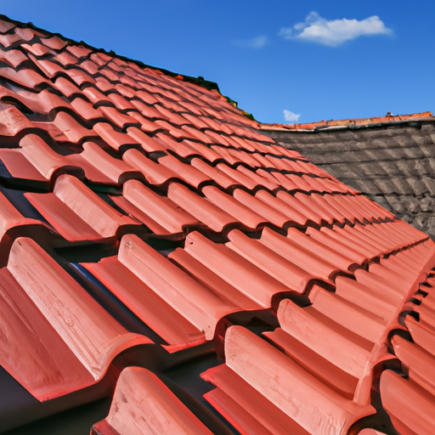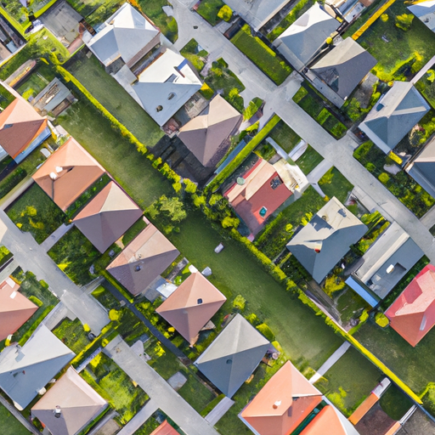When it comes to choosing the right roofing material for your home, it’s important to consider factors such as affordability, durability, and aesthetic appeal. This comprehensive guide explores various types of roofing materials, including asphalt shingles, metal roofing, wood shakes, slate tiles, clay tiles, concrete tiles, and synthetic materials. Each material has its own unique benefits and considerations, such as maintenance requirements and suitability for different climates. By understanding the pros and cons of each option, you can make an informed decision that will result in a well-constructed and long-lasting roof.
Innovations in Roof Construction: Exploring Modern Techniques and Materials
Innovations in roof construction have revolutionized the industry, with modern techniques and materials transforming the way buildings are designed and constructed. Advances in roofing technology have led to the development of sustainable materials, such as recycled metal, clay, and slate, which offer greater sustainability and energy efficiency. The use of advanced software and computer-aided design (CAD) technology allows for precise and efficient roof design, while the integration of renewable energy technologies, such as solar photovoltaic panels, contributes to the overall sustainability and resilience of buildings. Furthermore, advancements in roofing membranes and coatings have improved durability and longevity, with materials like EPDM and TPO offering enhanced resistance to weathering and water damage. Overall, these advancements ensure that roofs not only protect against the elements but also contribute to a more sustainable and environmentally friendly future.
The Basics of Roof Construction: A Comprehensive Guide
When it comes to choosing the right roofing material for your property, there are various options available. This guide explores different types of roofing materials, including asphalt shingles, metal roofing, clay or concrete tiles, wood shingles or shakes, and slate. Each material has its own benefits and drawbacks, such as affordability, longevity, energy efficiency, and aesthetic appeal. Factors like cost, durability, climate suitability, and professional consultation should be considered when making a decision. By choosing the right roofing material, you can enhance the visual appeal, value, and protection of your property for years to come.
Exploring Different Roof Construction Techniques for Long-lasting and Durable Structures
Exploring Different Roof Construction Techniques for Long-lasting and Durable Structures is crucial for building owners and developers. The article highlights four key techniques: reinforced concrete roofs, metal roofs, green roofs, and timber roofs. Reinforced concrete roofs offer strength, durability, and versatility. Metal roofs are known for their exceptional durability and weather resistance. Green roofs provide energy efficiency, stormwater management, and aesthetic benefits. Timber roofs offer insulation properties and a unique aesthetic appeal. The article emphasizes the importance of selecting the right technique based on specific project requirements to ensure the longevity and sustainability of structures. The introduction sets the stage for the comprehensive guide, which explores various construction techniques that enhance roof strength and resilience.
A Comprehensive Guide to Roof Construction: From Design to Installation
When it comes to roof construction, understanding the different types of roof structures is essential. The right roof design not only enhances the aesthetics of a building but also ensures its durability and functionality. In this comprehensive guide, we provide a detailed overview of the basics of roof design. We explore different types of roof structures such as flat roofs, gable roofs, hip roofs, mansard roofs, gambrel roofs, and shed roofs, discussing their features and advantages. By familiarizing yourself with these different designs, you can make informed decisions that will ensure the durability, functionality, and visual appeal of your building.
Innovations in Roof Construction: Exploring Modern Methods and Sustainable Solutions
Sustainable innovations in roof construction are pioneering the way for greener buildings, offering environmentally friendly and cost-effective solutions. Green roofs, covered with vegetation, provide insulation and manage stormwater runoff, reducing drainage burden and water pollution. Solar roofs incorporate photovoltaic panels into traditional materials, generating renewable energy and reducing reliance on fossil fuels. Eco-friendly and recyclable roofing materials minimize environmental impact while offering durability and energy efficiency. Advancements in insulation materials improve energy efficiency and comfort, while innovative manufacturing techniques reduce waste and construction time. These innovations not only benefit the environment but also yield long-term cost savings, shaping the future of roof construction.
The Complete Guide to Roof Construction: Materials, Techniques, and Maintenance
The article „Roof Construction: Choosing the Right Materials for Durability and Aesthetics” highlights the importance of selecting the appropriate roofing materials for enhancing the durability and aesthetics of a home. It discusses various popular options, including asphalt shingles, metal roofing, clay or concrete tiles, and slate tiles, detailing their unique features and advantages. The article emphasizes the need to consider factors such as budget, climate, architectural style, and personal preferences when choosing roofing materials, as well as the importance of consulting with a professional roofer. Additionally, the article mentions that successful roof construction requires mastering key techniques from framing to installation to ensure a structurally sound and long-lasting roof.
Innovative Techniques and Materials in Roof Construction: Exploring New Possibilities
Revolutionizing roof construction involves the use of advanced materials, such as solar roofing and self-healing materials, which offer superior performance, aesthetics, and sustainability. Green roofs, incorporating vegetation, provide environmental benefits and create outdoor spaces. Prefabrication and digital technologies have streamlined the construction process, reducing waste and improving precision. Additionally, there is a focus on sustainability, with the use of recycled materials and green building practices. These advancements are creating more sustainable, durable, and energy-efficient roofs, with endless possibilities for further improvement in the future.
Essential Steps for Successful Roof Construction: A Comprehensive Guide
Planning and designing a roof construction project is essential for its success. Factors such as understanding the building’s purpose, assessing local climate conditions, ensuring structural integrity, and considering aesthetic considerations all play a vital role in the planning and design phase. Involving experienced professionals in the process can provide valuable insights and ensure compliance with regulations. Choosing the right materials is another critical step, requiring an assessment of specific needs such as climate, roof slope, and budget. By carefully considering these factors and taking the necessary steps, one can increase the chances of a successful roof construction project.
The Science and Art of Roof Construction: Understanding Structural Design and Building Codes
Understanding Roof Design: The Key Principles for a Structurally Sound Construction
When it comes to constructing a roof, understanding the principles of design is crucial to ensure a structurally sound and durable construction. A well-designed roof not only protects the building from external elements but also provides stability and long-lasting performance. In this article, we will explore some key principles that are crucial for understanding roof design. These principles include load-bearing capacity, roof slope, material selection, ventilation, and insulation. By carefully considering these factors, architects, engineers, and contractors can construct roofs that are aesthetically pleasing, durable, and meet all applicable building codes.


